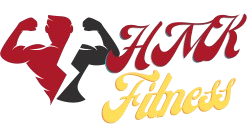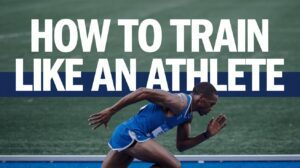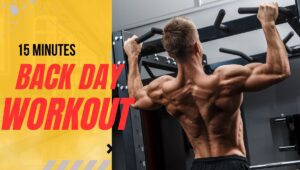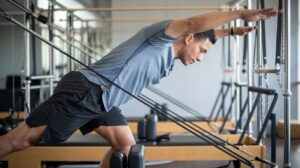Table of Contents
ToggleIntroduction:
Incorporating small ball exercises into a fitness routine provides a new and creative approach to improving workouts. This compact, versatile tool engages multiple muscles, making it suitable for everyone—from gymnastics beginners to experienced athletes. It helps improve balance, coordination, and muscle toning, adding value to any training program. These exercises will break the monotony and enhance your understanding of how various movements affect your body, making the overall experience more engaging and effective.
Benefits of Small Ball Exercises:
Improved Core Stability: This type of small ball is good for core strengthening and stability, which is needed to perform any daily activity and fitness activity. Engaging the core muscles will help correct posture, reduce back pain, and strengthen the body.
Versatility and Convenience: Small balls are an amazing alternative to bulky equipment because they are lightweight and portable. They can be taken anywhere: at home, in the gym, or even outside. Because of their many advantages, these fittings are best suited for people who intend to workout quickly.
Enhanced Flexibility and Balance: In most small ball exercises, balance and stability play a key role, which tends to tire out the small stabilizing muscles. This can increase coordination and flexibility, which will help minimize injury.
Low Impact, High Results: Many of these small ball exercises are low impact, which makes them suitable for people of all fitness levels, including recovery from injuries. Although mild, these exercises have a massive impact on defining and shaping the body.
Choosing the Right Small Ball:
1. Size Matters: Exercise balls used in workouts are generally small, with a typical diameter ranging from 7 to 9 inches. The right size depends on your body type and the specific exercises you plan to perform. A slightly deflated ball can add an extra challenge to stability exercises.
2. Material and Grip: Look for balls made of durable, non-slip material to ensure safety during workouts. Textured surfaces can provide a better grip, making it easier to control the ball during various movements.
3. Inflation Level: The inflation level of your small ball can alter the difficulty of your exercises. A firmer ball offers more support but less challenge, while a softer ball can make stability exercises more demanding.
2. Upper Body Small Ball Exercises Overview:
Small ball exercises for the upper body are an excellent way to engage muscles in your arms, shoulders, chest, and back. The ball adds instability, forcing your muscles to work harder to maintain balance, leading to greater strength and endurance over time.
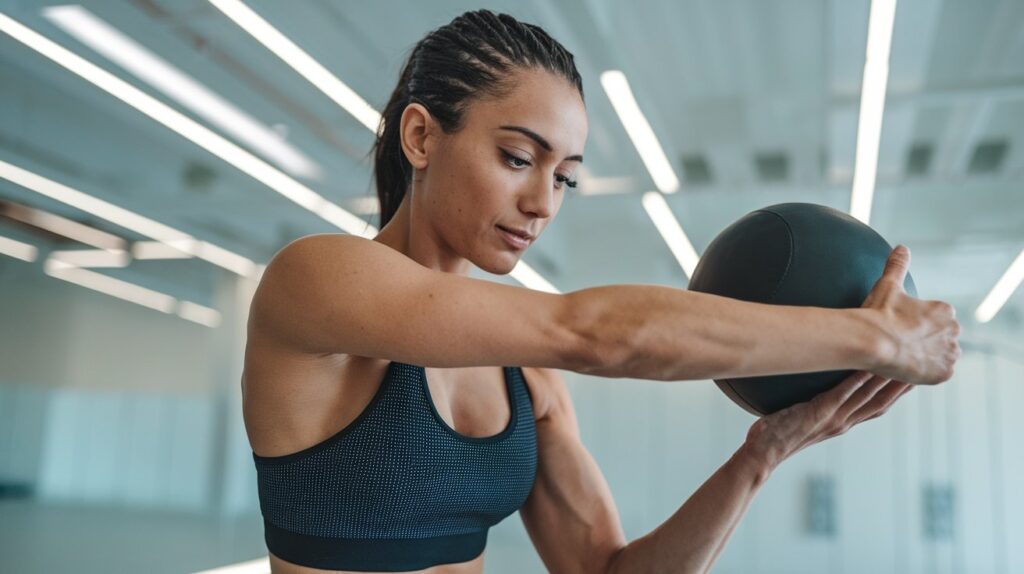
Arm and Shoulder Workouts:
- Overhead Ball Press:
- How to Perform: Stand with your feet shoulder-width apart and hold the small ball overhead with both hands. Slowly lower the ball behind your head, bending your elbows. Press the ball back up to the starting position.
- Benefits: This exercise targets the triceps and shoulders, helping to build upper arm strength and improve overall shoulder mobility.
- Tips: Keep your core engaged to prevent arching your back. Start with slow, controlled movements to maintain stability.
- Ball Squeeze for Chest Activation:
- How to Perform: Stand or sit upright and hold the ball in front of your chest with your palms facing each other. Squeeze the ball as hard as possible, engaging your chest muscles, then release it slightly. Repeat for 12-15 reps.
- Benefits: This simple yet effective exercise activates the pectoral muscles, enhancing chest strength and definition.
- Tips: Squeeze the ball using your chest muscles, not your arms. Breathe steadily throughout the exercise.
Chest and Back Strengthening:
- Wall Push-Ups with Ball:
- How to Perform: Place the small ball against a wall and position your hands on it at chest height. Perform a push-up by bending your elbows and lowering your chest toward the ball, then press back up to the starting position.
- Benefits: This modified push-up variation targets the chest, shoulders, and triceps while incorporating core stability due to the ball’s instability.
- Tips: To increase the effectiveness of the exercise, try to keep your body straight from head to heels and activate the core as much as possible.
- Back Extensions with Ball:
- How to Perform: Lie face down on the floor with the ball under your chest. Stretch your arms forward and lift your upper body off the ground, engaging your shoulder blades by squeezing them together. Lower your body back down and repeat the movement.
Benefits: This exercise strengthens both the upper and lower back muscles, promoting better posture and reducing the chances of back pain.
- Tips: To prevent strain, keep your neck aligned with your spine. Move slowly to concentrate on proper muscle engagement.
Core and Abdominal Workouts:
Small ball exercises are particularly effective for targeting the core and abdominal muscles. By adding an element of instability, these exercises challenge your core, leading to improved strength, stability, and muscle tone. Adding these movements to your routine will help you develop a solid foundation, boost balance, and increase overall body control.
Small Ball Crunches:
- Basic Ball Crunch:
- How to Perform: First, lie down supine, keeping your knees bent and feet on the ground. The small ball is placed between the lower back and the floor, slightly above the tailbone. Take your hands behind your head and perform the shoulder lift off the floor using your core. Go back flat on the floor and repeat the action.
- Benefits: This exercise targets the upper abdominal muscles, enhancing core strength and definition. The ball adds an extra challenge by requiring your core to stabilize your movements.
- Tips: Avoid pulling on your neck as you crunch up. Focus on lifting your abs and maintaining slow and controlled movements to ensure maximum effectiveness.
- Ball Pass Crunch:
- How to Perform: Lie on your back with your legs extended and the small ball held between your hands. Lift your legs and arms simultaneously, passing the ball from your hands to between your feet. Lower your legs and arms back to the floor, then repeat, passing the ball back to your hands.
- Benefits: This exercise engages the core, including the upper and lower abs, obliques, and hip flexors. It’s a great move for building a well-rounded, strong midsection.
- Tips: To protect your spine, keep your lower back pressed against the floor throughout the movement. Perform the exercise slowly to maintain control and proper form.
Oblique Twists and Stability Exercises:
- Seated Oblique Twist:
- How to Perform: Sit on the floor with your knees bent and feet flat. Hold the small ball with both hands in front of your chest. Slightly lean back, engage your core, and twist your torso to the right, lowering the ball toward the floor beside you. Return to the centre, then twist to the left. Continue alternating sides for 12-15 repetitions.
- Benefits: This exercise targets the oblique muscles essential for rotational strength and core stability. It helps improve side definition and enhances functional movement.
- Tips: Keep your movements controlled, and avoid using momentum to twist. Focus on engaging your obliques to rotate your torso.
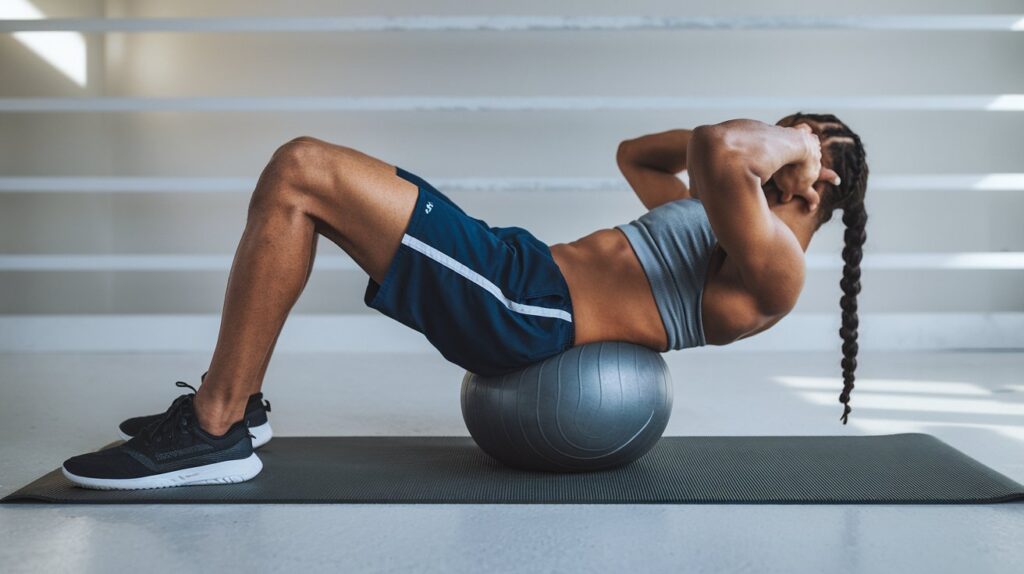

- How to Perform: Start in a high plank position with the small ball under one hand. Slowly roll the ball from one hand to the other, maintaining a strong plank position. Keep your core tight and avoid sagging your hips.
Benefits: This exercise challenges your core stability, shoulders, and arms while adding an element of instability that forces deeper core engagement.
Tips: Keep your hips level and your body in a straight line from head to heels. Move the ball slowly to maintain control and prevent losing your balance.
Lower Body Small Ball Workouts:
Incorporating a small ball into your lower body workouts can enhance muscle activation in the glutes, hamstrings, and thighs. These exercises add instability, forcing the muscles to work harder to maintain balance, improving strength, coordination, and overall muscle tone in the lower body.
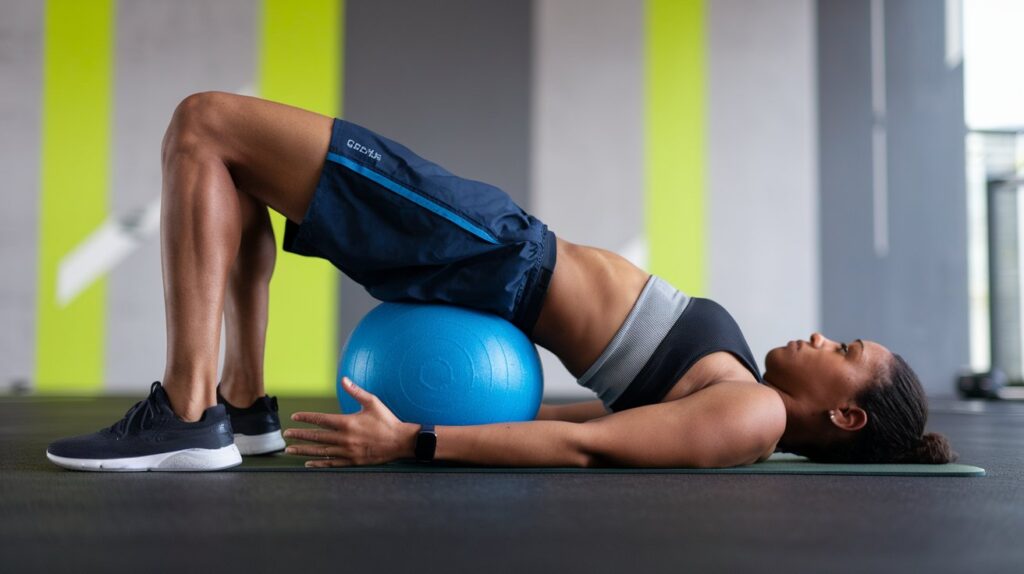

Glute Bridges and Hamstring Curls:
- Glute Bridge with Ball Squeeze:
- How to Perform: Lie on your back with your knees bent and feet flat on the floor. Place the small ball between your knees. Press your feet into the ground and lift your hips toward the ceiling while squeezing the ball between your knees. Lower back down and repeat.
- Benefits: This exercise targets the glutes, hamstrings, and inner thighs. The ball squeeze activates the inner thigh muscles, adding extra resistance and improving lower body strength.
- Tips: Keep your core engaged and avoid arching your back. Focus on squeezing the ball and engaging your glutes as you lift your hips.
- Hamstring Curl with Ball:
- How to Perform: Lie on your back with your feet on the small ball. Lift your hips off the ground to form a straight line from your shoulders to your heels. Roll the ball toward your body by bending your knees, then extend your legs back out, keeping your hips lifted throughout.
- Benefits: This exercise strengthens the hamstrings and glutes while challenging your core stability. It’s particularly effective for improving hamstring endurance and lower body strength.
- Tips: Keep your movements slow and controlled. Focus on lifting your hips as you curl the ball in and out, engaging your core throughout.
Squats and Lunges with a Small Ball:
- Wall Squat with Ball:
- How to Perform: Stand with your back against a wall and place the small ball between the wall and your lower back. Slowly bend your knees to lower into a squat, keeping your knees over your toes. Press through your heels to return to the starting position.
- Benefits: This squat variation engages the quads, glutes, and hamstrings. The ball supports and helps maintain proper form, making it easier on the knees while still effectively working the muscles.
Tips: Maintain a straight back and activate your core to safeguard your joints. Ensure your knees do not extend beyond your toes.
- Lunge with Ball Rotation:
How to Perform: Stand with your feet aligned with your hips, holding the small ball at chest height. Step forward into a lunge with your right leg, bending both knees. Rotate your torso and the ball to the right as you lower into the lunge. Return to the starting position, then repeat the movement on the opposite side, alternating legs.
Benefits: This exercise targets the legs, glutes, and core, while the rotational movement engages the obliques. It’s a great full-body exercise that improves balance and coordination.
Tips: Keep your chest up and back straight during the rotation. Engage your core to control the twist; ensure your front knee stays aligned with your ankle as you lunge to maintain proper form and prevent injury.
Full-Body Workouts and Stretching:
Small balls are ideal for full-body exercises that improve stability, coordination, and muscle activation. These workouts effectively target multiple muscle groups at once, increasing the efficiency of your routine. It is also important to add a small ball to the stretching exercises as it helps improve flexibility whilst promoting muscle recovery as well, so it is important in every fitness program.
Full-Body Stability and Coordination Drills:
Full-Body Roll-Out:
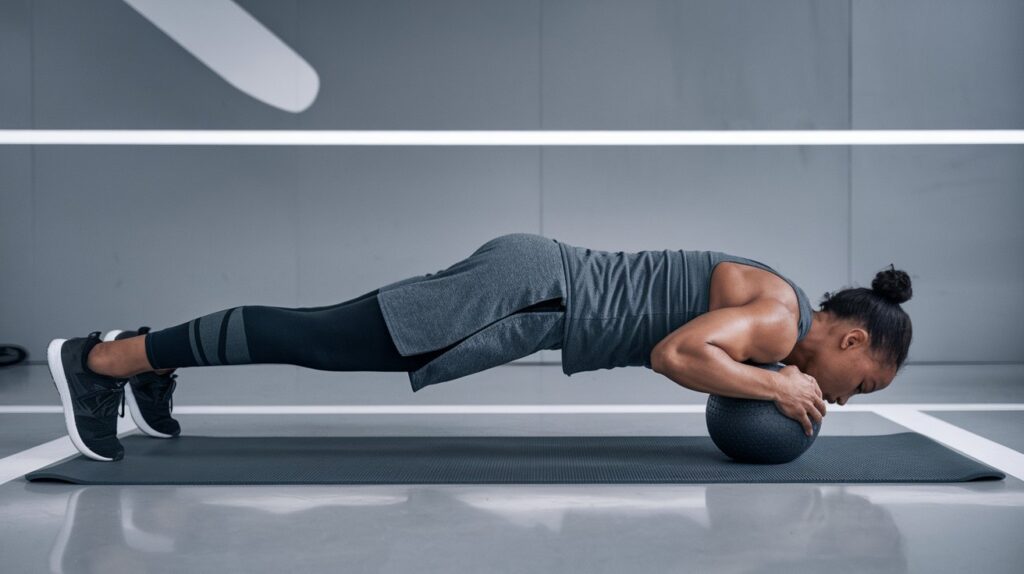

How to Perform: Start on your knees with the small ball before you. Place your hands on the ball and slowly roll it forward, extending your body into a plank-like position. Engage your core to pull the ball back toward your knees and return to the starting position.
Benefits: This exercise engages the core, shoulders, chest, and back muscles while improving stability and control. It’s a full-body movement that enhances coordination and balance.
Tips: Ensure your core stays engaged and avoid hyperextending your back in the roll-out. Move slowly to stay under control and save the ball from sliding away.
- Ball Transfer Plank:
How to Perform: Start in a high plank position with the small ball near one hand. Use your opposite hand to pick up the ball and move it across to the other side. Alternate hands, moving the ball back and forth while maintaining the plank position.
Benefits: This exercise targets the core, shoulders, and arms while challenging overall stability. It requires coordination and engages multiple muscle groups.
Tips: Keep your hips level and avoid rocking as you move the ball. Focus on maintaining a strong plank position with your body in a straight line.
Stretching and Recovery Using a Small Ball:
- Lower Back Release:
How to Perform: Sit on the floor with your knees bent and feet flat. Place the small ball under your lower back and gently lean onto it. Slowly roll your body over the ball, focusing on tight areas in the lower back. Hold each position for a few seconds and take deep breaths.
Benefits: This stretch helps to release tension in the lower back muscles, improving flexibility and relieving tightness. It’s ideal for post-workout recovery or relieving daily back discomfort.
Tips: Move slowly and carefully, avoiding any sharp pain. Use your hands to support your weight and control the pressure applied by the ball.
- Chest and Shoulder Stretch:
- How to Perform: Stand facing a wall with the small ball between your chest and the wall. Press your body into the ball, rolling it to massage the chest and front shoulder muscles. Focus on tight areas and hold each stretch for a few seconds.
- Advantage: This exercise helps open the chest and shoulders, improve posture, and reduce muscle tightness. It’s especially beneficial for individuals who spend a lot of time sitting or working at a desk.
- Tips: Keep your movements gentle and controlled. Focus on your breath to help relax the muscles and deepen the stretch.
Conclusion:
Integrating small ball exercises into your workout program is a core, efficient, and fun way of developing your strength, balance, and overall flexibility. These exercises are versatile and easy to access while also introducing a distinct challenge that activates various muscle groups, ensuring each workout is engaging and effective. By incorporating the small ball, whether focusing on the core, upper body, or lower body, the instability requires your muscles to exert more effort, enhancing balance, coordination, and muscle definition.
One of the greatest benefits of using a small ball is its ability to suit all fitness levels. Beginners can start with basic movements to build foundational strength, while advanced exercisers can increase the intensity by incorporating the ball into more complex drills. The small ball’s versatility means it can be used in strength training, stretching, and even recovery exercises, making it a valuable tool for anyone looking to elevate their fitness regimen.
To improve the outcomes of your small ball workouts, you must concentrate on the correct technique and level of intensity control in every exercise. As always, gravity still has field deviations from cylindrical, and in achieving the results, consistency plays an important role; making these exercises a part of your exercise routine regularly can dramatically increase muscle tone and improve stability and performance level. Also, adding the ball to your stretching and rehabilitation exercises helps reduce muscle tension, increase range of motion, and prevent injuries to keep you healthy and active for many years.
FAQs:
What size small ball should I choose for a certain exercise?
The usually recommended size is about 7 to 9 inches in diameter. Your size should depend on your body type and the specific activities that you intend to do.
Can I do small ball exercises even as a beginner?
Small-ball exercises are the best for beginners since they are low-impact and can be modified to any fitness level.
Will small ball exercises make my core stronger?
Most definitely. Small-ball exercises increase core muscle involvement due to the instability of the ball, thereby improving balance, core strength, and stability.
How often can one practice small ball exercises?
For maximum efficiency, small ball exercises should be done 2-3 times weekly alongside other strength and cardio workouts.
Can small ball exercises contribute to muscle recovery?
Yes, the small ball can provide stretching to release the muscles, which will improve the level of flexibility and reduce muscle tension, and one can recover from workouts faster
Is any other accessory required to perform the small ball exercises?
Generally, exercises on the small ball are versatile and the only thing required, thus making them pretty easy and accessible.”
